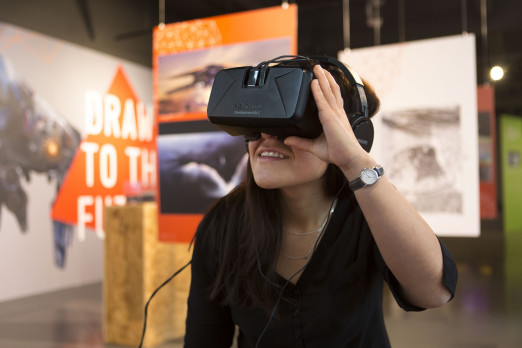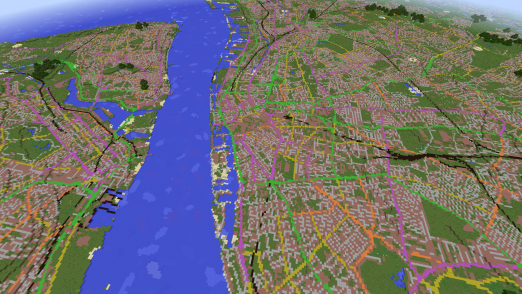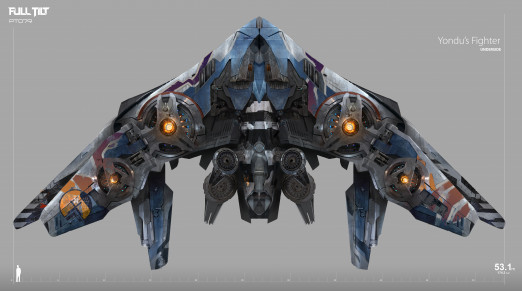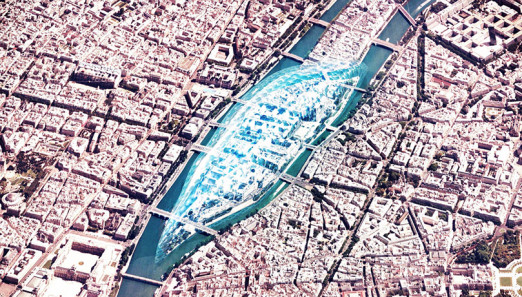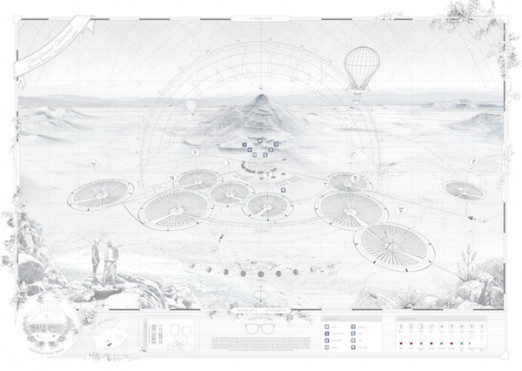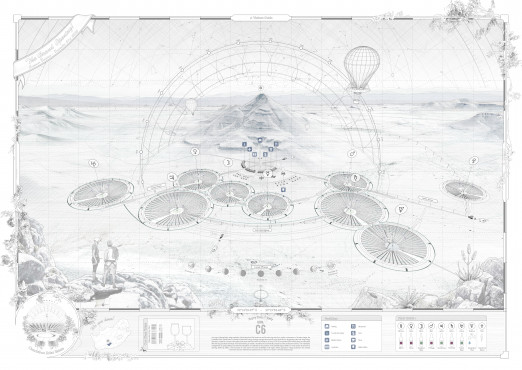Interview with John Cook, Westminster University
John Cook’s 'The Cambedoo Solar Estate' won first prize in the Visualising the Future of the City competition. Organised by the Commonwealth Association of Architects (CAA) and the Royal Institute of British Architects (RIBA) and open to students of architecture internationally, the scale, detail and ambition of Cook’s project integrates research, scholarship and visual storytelling in a visionary project.
Context
Could you tell us a little bit about what drives your interests and work at the moment, and where you trained as an image-maker?
John Cook: This project was completed as part of my final year studying architecture at Westminster University. The newly formed design studio I was in was concerned with exploring a range of scenarios that could arise as a result of: climate change, environmental devastation or future energy demands (for example), and finding ways to examine, visualise and simulate these using computational methods. Over the course we learnt how to handle and process large data-sets – using them to analyse and visualise anything from economic or environmental trends, to the large-scale physical or meteorological mapping of a landscape. We employed fluid/particle simulation software as a tool to model flows of: energy, water or air and represent these usually invisible phenomenon. This process built up a unique sort of aesthetic amongst the students.
My experience before this was quite different though. At school I had studied graphic design and art (which was taught quite traditionally), and similarly the architecture company I work for currently still have a strong attachment to their hand drawings. I think their methods of composing an image or diagram and their techniques of drawing have had a big influence on my current work – right now I’m interested in exploring ways of combining that hand-crafted aesthetic with the outcome of computer driven processes, I think it makes for an interesting contrast, but perhaps is not always successful yet.

Research
Could you tell us a little bit about your approach to the brief? What areas of research did you explore around architecture, rituals, cosmology?
John Cook: The work this year was situated in South Africa, specifically in the Camdeboo National Park. A number of oil companies were recently given exploratory drilling licenses to determine the viability of ‘fracking’ in this beautiful and remote area – our brief was to propose an alternative energy strategy. We went on a field trip to get an understanding of the landscape, towns and people, and met local lawyers, farmers and geologists to hear their views. The Camdeboo is a fairly remote area, its main industries are tourism and agriculture – relying on the picturesque views and its wide range of wildlife.

John Cook: I was interested in the potential of solar energy for South Africa, specifically Concentrated Solar Power (CSP) plants, so my initial research was fairly analytical – mapping solar irradiance data with various other environmental and political factors to determine the location of a series of these solar plants. I wanted to use the infrastructure of these plants to somehow aid the existing industries of the Camdeboo – tourism and farming. The wine industry of South Africa perfectly encapsulates this cross-over between tourism and agriculture, so I began exploring the process of grape growing, and given the Camdeboo landscape is classified as ‘semi-arid’ (so not hugely agriculturally viable or profitable), I looked into the ancient techniques of terrace-agriculture as a way of combating these harsh conditions.
The third layer of the brief came when I read about the ‘Adams Calender’ landscape in the northern area of Mpumalanga, South Africa. Similarly to my project, this landscape, now thousands of years old, shows evidence not only of terrace farming practices, but contains hundreds of mystical stone ruins that are believed to align themselves to particular solar events and celestial orientations – it is in a way a larger South African version of Stonehenge. I was interested in the play between modern techniques of solar energy harvesting, and the ancient techniques of solar observation and worship.
I began researching and simulating the behaviour of the Earth’s orbit around the sun, the significance of equinox’s and solstices and how their timings changed, and the relationship and orbits of the planets in our solar system, both physically and mythologically. These factors would determine all aspects of the energy masterplan – from the arrangement, size and orientation of the solar plants, to their walkways and paths of transmission.

Making
Could you tell us a little about the process of making the images, of staging the images a part of a narrative? Where do you get your sense of narrative/storytelling from?
John Cook: The project raised a number questions to do with the impact that large infrastructural projects have on our environment – we manipulate these natural landscapes and leave such significant long-term marks for our benefit. Much like the Adam’s Calender, I wondered what the project would look like thousands of years from now, and whether its use could change over time to perhaps preserve some sort of longer-term significance?
The function of the master-plan and its buildings is therefore designed to change as it ages. Beginning as a solar energy farm and series of vineyards, as the CSP technology becomes outdated over the next 60-100 years, the master-plan continues operating as winelands. When these buildings become abandoned or fall into disrepair, the design and careful material selection inform a sort of ‘choreographed’ degradation. As certain building parts collapse and disintegrate, the hidden astronomical instruments are revealed, and the building enters its final use of ‘astronomical observatory’.
Finding a way to convey these vastly differing themes of ‘time-scale’ and the ‘physical-scale’ through the drawings was quite difficult. The project deals with a national energy solution, executed through a masterplan that covers many kilometres, but also operates on the human-scale of a single building. The function of the project at each of these scales also evolves over time. It therefore felt more appropriate to try to explain and represent these ideas in a narrative format. I tried to set out the storyboard so that you were zooming down through scales as we imagined the project further and further into the future – it begins at present day explaining the current energy crisis that affects South Africa, and ends thousands of years in the future looking at what is left of the possible solution.
Visual
How did you decide on the aesthetic? Could you tell us a little about the architectural aesthetic?
John Cook: The visual aesthetic evolved throughout the project, and was perhaps not as fixed as I would have liked. The work jumps from data visualisation, to mapping, to perspective, and trying to get them to read in the same language was not always successful. As I began to imagine the scheme in a more romantic way, particularly as it began to turn to ruin, I took inspiration from a number of artists, photographers and architects that had explored similar themes. Piranesi’s ruin etchings, Joseph Gandy’s watercolours and the photographs by Matsushige all gave precedents to the depiction of abandoned or ruined monuments.

Could you tell us a little more about the visual system you developed from stars/planetry movements and how these images function within the narrative of the tourist?
John Cook: There were a number of interesting sources to draw from when producing the estate tourist map. I looked at a number of vineyard maps but also the more playful themepark guides that you might get from somewhere like Disneyland, where they use an artificial and distorted kind of perspective to depict certain elements whilst allowing it to still remain legible as a 2D map. It becomes a really rich and active image that is also completely functional. Using this as a basis I tried to combine this with the kind of imagery and aesthetic that you find on old astronomy and planetary charts. More precise astrological data and solar diagrams are weaved throughout the composition. The idea was to convey the various aspects of the brief (astronomy, energy, agriculture, tourism) not only within the image but also in the format of the image itself. The map included a key, adverts and a token to use at the estate, and was presented folded-up within a card-cover to emphasis the idea.

Futures
Are there any futurists in particular you are influenced by? In the piece you use mythology as a tool to generate the idea of a sustainable life-cycle, what is its place in architecture and planning?
John Cook: Throughout the project I was drawn to the more traditional visions of the future, particularly from artists of the neoclassical period. Their delicate and almost mystical portrayal of buildings and cities are in sharp contrast to the majority of depictions (usually negative) that we see today in film and media, it perhaps reveals a change in attitude toward what direction we are going as a society.

In terms of the tools we have at our disposal to aid us predicting and visualising this future, we have come a long way since Joseph Gandy’s portrayal of John Soane’s Bank of England. Modern technology and software can, up to an extent, predict the lifetime of materials and simulate how things might fail, which was how it was employed for this project. Of course there is no predicting all of the external factors or what their effect may be, but it is an interesting way of thinking about our architecture and design – what is its useful life, and what is its life after use?


